|
I'm now experimenting with Glitch maps. This is getting me into code, process and apps or software. I can't wait to see what happens with this series and idea. These are created with my iPhone5s.
3 Comments
Being fascinated by fractals has led me here. Coastlines are fractals. I am tinkering with the idea of using Google Earth to make fractal art. Here are some first tries. I want to abstract, what I find on my exploration. I also want the earth to look vivid, replicate, as fractals do, life, organs, trees, and amplify the organic. Some images look like organs to me, vascular systems, some look to be on a cellular level, or even outer space. Whatever the case, nature is surely intricate and sophisticated, yet amazingly simple at times too. I love it. REBECCA: "I never told you about that letter Jane Crofut got from her minister when she was sick. He wrote Jane a letter and on the envelope the address was like this: It said: Jane Crofut; The Crofut Farm; Grover's Corners; Sutton County; New Hampshire; United States of America." GEORGE: "What's funny about that?" REBECCA: "But listen, it's not finished: the United States of America; Continent of North America; Western Hemisphere; the Earth; the Solar System; the Universe; the Mind of God--that's what it said on the envelope." GEORGE: "What do you know!" REBECCA: "And the postman brought it just the same." GEORGE: "What do you know!" Our Town, Act 1 I was really inspired by the tangible examples of maps in our textbook, The Map as Art: Contemporary Artists Explore Cartography. The paintings, installations and sculptures got me thinking I wanted to make something physical. My map deals with the concept of strata or geological strata mapping. Like layers beneath the surface being the memories and experiences that make up our lives. My attempt at this map was to include memorable events throughout my life, inserted within the layers of a map of Florida folded so that Ocala would be a center point on the top surface of the map display. The sides of the map appear semi-transparent, allowing light and shadow to play about. The folds are organic and reminiscent of the strata maps of the earth below the surface of our planet. The strata contain strips of artistic papers with memories written on them. The photos were printed from my Facebook album containing a lot of family photos and photos of friends growing up. The stratum also contains real photos. I included business cards of the dentist I have recently visited and would like to include more recycled materials, even bills that reflect my life. I would like to include student artwork that has been left behind and other materials I find and can incorporate. Some documents or even objects in the strata would be more important in relation to my life and others subtle or even insubstantial. I am inspired as there could be many themes to this sculptural approach to representing maps. One idea is to cut the surface map to match the shape of Florida, collage/adhere a map of Florida to fit and then the strata would consist of vintage and contemporary imagery, documents and brochures. The sculpture could be large, 6ft or more and viewed as this one is, in the round. In addition the large Florida map could be viewed from a higher vantage point, say a balcony as well. This would give the sculpture a multi-dyamic approach in viewing and perceptive qualities. Overall I am happy with this experiment. I plan on making the historical Florida strata map (starting with prototypes) and may approach gallery or State government spaces someday. I will start with experiments of working in larger formats with this strata idea generally too. Process and Detail Photos included. Same Thing, Different Way...The roles and responsibilities of an art educator are in constant flux. Twenty first century challenges have evolved. Some are congruent and some intersecting from our past. With that said, this artwork explores and expresses some of my concerns as an artist and art educator. Anytime we look to see, we are already perceiving something historic. Whether it be the twinkling stars at night, or the image reflected of a nearby friend on our retina. We are literally living in the past. Much can be learned here and it is the intent of this author to show with clarity some of the "same things" in a "different way" that have demonstrated prevalence for over the last 100 years. In learning from our past we may find better ways to live in future times. It is good to read the pulse of culture, to see the direction of humanity and get an idea of where we fit into the bigger picture. In the late 1800's emphasis was placed on art education to keep with up growing technologies. We see a similar push in today's emerging technology sector as well. As in yesteryears, social, economic, political and cultural factors still have major influence in societal living today. Recognizing and honoring human equity is of utmost importance in our treatment of others. Educators in the United States wage war daily against ignorance, striving for a community of responsible, educated individuals who will nurture and practice a free thinking, democratic way of life. This artwork is my reflective attempt to address those issues central to every human being. Those are matters not just of intellect, more so of the heart. How do we effectively reach those around us, promoting the arts and art education in a way that is transformative for all involved and a call to those who have no involvement or awareness therein? How can we as art educators define and fulfill the roles society has placed on us in our profession? "How" is not always a question easily answered, however, it is an endeavor we must not fail to pursue. Details:21st Century Art Educator Roles Imagine
Imagine we have silently dropped down into the back of a middle school art classroom. As we observe, the projector screen lights up with examples of the high tech and innovative work of Fabian Oefner, Reuben Margolin and Theo Jansen. Oefner’s high definition photographs explore creative perspectives on the properties of matter. Fiber optics made to look like telescopic images of space, spinning splashes of paint with vibrant colors are captured in an instant. The usually unseen world of soap bubbles bursting and sound waves sculpting form displayed throughout (TEDGlobal 2013). Margolin’s repurposed materials are formed into water eddies while his mechanized caterpillars demonstrate a keen ability to relate to natural phenomena (Make Magazine, 2009). Students intently view Jansen’s larger than life, wind driven sculptures as they walk seaside beaches. Anomalies they are, with joints bending and stepping, they resemble fossilized ancient creatures or spindly futuristic robots (Theo Jansen, n.d.). We would most likely hear the shifty and vocal excitement of students being exposed to such artwork for the first time. To look around we would see the eyes of youngsters fixed on the screen with faces of interpretation, wonder and concentrated engagement. Such has been the case in my own art classroom. In art education we possess a unique wonder to share with others. The act of creation alone provides numerous opportunities for exploration and learning. The experiential insights of working with materials and mediums’ behaviors, limitations and adaptations are enormously valuable. This is so of its own merit and within the correlations of cross disciplines and domains. The conceptual and historical studies in art education prove to be substantial in scholarship. Meaning is constructed from personal and collective experience and art offers a way to democratize pluralistic content and the populous. Culturally studying the arts help us to understand various sensitivities. We ask why? With such an experience waiting for eager students to enter in, it is a curiosity as to why some educational leaders and administrators don’t better understand all the value the arts offer. It is further perplexing as to why curriculum freedom is increasingly restricted within the art classrooms. Exemplifying how creative energies can be dynamically manifested are the examples of the aforementioned artists. Additionally for instance, is the broad intellectual power of collaborative venues like TED Talks. Why is it then that schools currently lack provision in fluid, technologically relevant, professionally collaborative approaches to learning? More so, evidence suggests open-ended explorations bring motivated discovery and develop the habits of a creative individual (Csikszentmihalyi, 1996). Diverse platform symposiums provide cutting edge inspiration and a proliferation of profound ideas. These brief reflections of real world life integrate within arts collective pièce de résistance. Shouldn’t we then follow these examples on campuses and specifically in art education? If John Dewey was centered on students leaving classroom experience equipped for productive societal life experience (Harris & Neiman, n.d.) we should all the more support art educators’ roles in facilitating this diverse and higher ordered learning. However, reality demonstrates little wiggle room for art educators. Classes are ill provided with outdated and “over filtered” technology, large class sizes make teaching impractical and in some cases unreceptive administrators are uneducated to the many avenues fitting art educational practice. This only further marginalizes our profession. Worse, art education may be morphed into a social studies template, or an academically based humanities component. Art education leader Vincent Lanier was overt in pushing a validation of art education through refined analysis and critique in practice. Using the mass media of his day, (i.e. primarily film), and covering various forms of visual culture, Lanier prodded down a path hopeful students would find deeper meaning and eventually analyze finer art (Lanier, 1966). His promotion of avoiding and even abandoning studio practice was in theory a fire that may burn brighter in future education circles. However, like John Ruskin most artist/art educators understand the value of working with ones hands, head and heart in creating and understanding art (Ruskin, 1859, p. 54). Contrastingly, due to the attractions of digital media, strains on school budgets, and students’ lack of early educational arts training, traditional studio methods of art creation (in many cases) are becoming more challenging to implement. Digital Influence With youth culture we see this obvious gravitation to the digital. Like no other generation before has access to personal, powerful technology brought the Internet and software applications into the palm of our hands. Mobile and massive, students can see more, do more and experience more than ever before. Yet as noted by Gilbert Valdez, students in the classroom perceive poor teacher knowledge, preparedness and pedagogical skills regarding classroom technology (Valdez, 2005, p. 4). This contributes to the “disconnect” in harnessing that same power for deep classroom instruction. In this sense, maximum effectiveness using technology should be our aim. It is the responsibility of the art educator to be proficient in such matters and imperative if these new measures are going to be successfully utilized (p. 4). Problems stemming from the ongoing recession in America have fueled hindrances in public education’s ability to keep up with industry and in some cases the proverbial Joneses (i.e. other countries where contemporary technology provision in schools is an emphasized priority) (Zakaria, 2011). Our students require “unique ways of acquiring and interpreting knowledge” (Tillander, 2008, p. 232). Opportunity through skilled pedagogical use of new technology will be key. In general, students need valuable art experiences to help develop their full personal potential (Jeanneret, 2008). If schools systems do not keep current, art education will be greatly affected, falling off the studio slope and wiping out on the wave of progress. For students to succeed in the next five to ten years, technology provision in school reform will have to take precedence and start immediately. If not, provision from private industry and developers of application freeware will have to make considerable contributions to supplement. In the case of free applications, usefulness is limited. Developers’ ventures become money making opportunities and the product is sometimes reduced, abandoned or becomes outdated. Bright spots do persist as in the case of Google’s Sketchup and the web based image editor, Pixlr, absorbed into larger companies, yet still available for free (Bacus, 2012; Wauters, 2011). There may need to be more powerful open source contributions from founders like Edutopia, EdTech and the Kennedy Center for the Arts, including wealthy museums to provide high-end applications for the 21st century art classroom. Could this be a new direction for museum education? This idea in technology provision may be an additive to the current push for what I call “hubbing.” The NAEA put forth research agenda promoting scholarly collections be centralized and accessible (NAEA, n.d.). Upon my own explorations I was surprised to see sites like Edutopia and The Warhol already amassing collections of scholarly articles through annotated bibliographies and active links (Vega, 2014; The Warhol, n.d.). Will agencies like these be able to facilitate the development of substantial classroom technologies overall? Researchers and educators active in advocacy and leadership will surely benefit from the strides already made in establishing collective repositories, another example of using technology effectively in professional development. Cultural Meaning and Investment Using a comprehensive approach, art education helps students find deeper meaning from critiquing and analyzing works of art while exploring periods of history and artists biographies. (University of North Texas, n.d.). Art educators must present relevant material and be educated themselves as to the complexities that exists within cultural crossings. As Bastos (2006) and Coulby (2006) suggest these intersections can be challenging, require research and implore us to get directly involved with participants, increasing cultural understanding, sensitivity and overall growth. Art educators will be instrumental in promoting social and cultural equity as in times past. With activism it will be the role of the educator to help students find the means to influence their community. Professionally art teachers will raise voices to solidify art education’s value. Activism will be essential in promoting the continued existence of art education on campuses while instilling the value of art education throughout future generations. Educators will need to ensure that students receive investment from their place in time. Many students in my experience were not born where they now reside. This transplantation and cultural exchange often leaves a shallow experience as to the roots and history of their surroundings. Without knowledge of these histories, socially and geographically, little value is placed on their environment. It is reflective on campus and in their integrated personal identity. To know about the unique natural features, resources and benefits of one’s neighborhood, community, region and state are enriching. It is essential for human beings to have a sense of belonging in local community. Focused on these attributes, art education can strengthen bonds and connectivity long term. In a pluralistic society this can create new heritage, just like creative studies help to produce new knowledge, domain changing in some cases (Milbrandt, 2011). In this role the art educator will be a storyteller of sorts, handing down historical significance and identifying locational resources for the student. The art educator can help raise awareness of their unique place in the world, promoting a sense of involvement, belonging, enjoyment and worth. In bringing meaning to art, place and history, it is also essential for art educators to encourage finding meaning in the myriad of visual culture that surrounds us. With growing access to imagery, memes, remixes and the like, students sometimes lack grounding and discernment to navigate effectively the messages they encounter. The role of the art educator will require us to engage in popular culture so that we can help in decoding information. Art teachers must guide students as they decipher negative influences and the prevalent cynicism found in many pop culture artifacts. Some images first appear humorous, however, upon analysis expose damaging input beyond the surface. Adult created imagery, yet with juvenile styling, can send mixed messages regarding life experience, empathy and cultural sensitivity. Although some popular media is inherently useful and intrinsic, it is the access to derivatives and disparate concepts that stand in contrast to responsible democratic citizenship. These subjects need a knowledgeable teacher, facilitating transition to teachable moments of redirection that are useful for personal and collective growth. Learning in the end Evidence supports that contemporary, fluidly diverse, collaborative and culturally responsible methods should be developed and applied to art education. The National Research Council states, “Knowledge that is taught in a variety of contexts is more likely to support flexible transfer than knowledge that is taught in a single context,” (The National Research Council, 2000, p. 236). Of course art educators are accustomed to wearing many hats. However, the role of the 21st century art educator is not just to teach in context and content. The art educator should instead, teach to learn alongside their students. The goal is to build habits of inquiry that lead to discovery and growth (Wiggins, 1989). When we do so, the aim is not the various practices. Instead the aim is to incorporate the positive and transformative power art education has on the human mind, heart and hand. Especially in our students and ourselves. References: Bacus, J. (2012, April 26). Official SketchUp Blog: A new home for SketchUp. Retrieved from http://sketchupdate.blogspot.com/2012/04/new-home-for-sketchup.html Bastos, F. M. C. (2006). Border-crossing dialogues: Engaging art education students in cultural research. Art Education, 59(4), 20-24. Coulby, D. (2006). Intercultural education: theory and practice. Intercultural Education, 17(3), 245-257. Csikszentmihalyi, M., & Sussex Publishers LLC. (1996, July 1). The Creative Personality. Retrieved April 13, 2014, from http://www.psychologytoday.com/articles/199607/the-creative-personality Harris, S., & Neiman, D. (2000). PBS online: Only a teacher schoolhouse pioneers. Retrieved from https://www.pbs.org/onlyateacher/john.html Jeanneret, D., & NSW Public Schools. (2008, November 13). Developing children's full potential: Why the arts are important. Retrieved from http://www.schools.nsw.edu.au/learning/k_6/arts/kids_potential.php Lanier, V. (1966). Newer Media and the Teaching of Art. Art Education, 19(4), 4-8. Retrieved February 21, 2014, from http://www.jstor.org/stable/3190788 Make Magazine. (2009, January 29). Maker Profile - Kinetic Wave Sculptures on MAKE: Television. Retrieved from https://www.youtube.com/watch?v=dehXioMIKg0 Milbrandt, M., & Milbrandt, L. (2011). Creativity: What Are We Talking About?. Art Education, 64(1), 8-13. NAEA. (n.d.). Creating a visual arts education research agenda for the 21st century: Encouraging individual and collaborative research (Rep.). Retrieved April 7, 2014, from NAEA website: http://www.arteducators.org/research/NAEA_Research_Agenda_12-08.pdf National research council. (2000). How People Learn: Brain, Mind, Experience, and School: Expanded Edition. Retrieved from http://www.nap.edu/catalog.php?record_id=9853 Ruskin, J. (1889). The unity of art. In The two paths: Being lectures on art, and its application to decoration and manufacture (p. 54). New York, N.Y.: John Wiley & Sons. TEDGlobal 2013. (n.d.). Fabian Oefner: Psychedelic science. Retrieved from http://www.ted.com/talks/fabian_oefner_psychedelic_science The Warhol. (n.d.). Unit Lesson Plans. Retrieved from http://edu.warhol.org/bibliog.html Theo Jansen. (n.d.). Beast photos events theo jansen miniature beasts | books | dvd contact. Retrieved from http://www.strandbeest.com/ Tillander, M. D. (2008). Cultural Interface as an Approach to New Media Art Education. Retrieved from http://books.google.com/books?id=EGu4J5jRqEAC&pg=PA232&lpg=PA232&dq=lack+of+technology+in+art+education&source=bl&ots=Rg8U32gkwn&sig=M1BxmLCKUwdJZdqPl-c3IJdablQ&hl=en&sa=X&ei=rMlaU6mvBKrNsASusIHYBg&ved=0CDMQ6AEwAQ#v=onepage&q=lack%20of%20technology%20in%20art%20education&f=false University of North Texas. (n.d.). North Texas Institute For Educators On The Visual Arts. Retrieved from http://art.unt.edu/ntieva/pages/teaching/tea_comp.html Valdez, G. (n.d.). Technology: A Catalyst for Teaching and Learning in the Classroom. Retrieved from http://www.ncrel.org/sdrs/areas/issues/methods/technlgy/te600.htm Vega, V. (12, December 12). Technology integration research review: Annotated bibliography. Retrieved from http://www.edutopia.org/technology-integration-research-annotated-bibliography Wauters, R. (2011, July 19). Autodesk Acquires Online Photo Editing Service Pixlr TechCrunch. Retrieved from http://techcrunch.com/2011/07/19/autodesk-acquires-online-photo-editing-service-pixlr/ Wiggins, G. (1989). The futility of trying to teach everything of importance. Educational Leadership, 44-59. Zakaria, F. (2011, March 03). Are America's Best Days Behind Us? Retrieved from http://content.time.com/time/magazine/article/0%2C9171%2C2056723%2C00.html A word from an art educator to Marion County My action plan consists of a letter to the editor of the Ocala Star Banner and a power point I will present to the School Board of Marion County. I included some background information as to why I chose this path. Arts in Marion County Schools recently suffered a hit in staffing and the subsequent over extension for educators as a result. At the beginning of the 2013-2014 school year, we lost all of our first year teachers throughout all the subject areas. We also lost a lot of paraprofessionals. For years now, our school board has consistently resorted to overcrowding classrooms in core classes and electives despite state limitations, paying fines, rather than paying salaries for new teachers. Marion County is actually the leading violator statewide in this area of contention. This year they reassigned art and music teachers due to the shortages in staff that they created. The county voters would not approve a millage tax to help raise money beneficial to elective classes. This of course only compounds the problem. Some art teachers were moved from elementary to middle school, some from middle to high. Most teachers remaining at the elementary level are now servicing more than one location. Some carry the responsibility of music and art, working from carts or rooms at both schools. Those campuses are not always close in proximity. My letter to the editor subtly addresses these issues as we draw near to the close of this school year. There is only about two and a half months left. I hope to raise awareness in the community in light that our school board has recently promised it plans on hiring more teachers. However, this may be indicative of another surprise like with last year’s events. There was a report in the paper just prior to the lay offs last year that indicated art and music teachers would be protected amidst cuts. They were generally, however some of the art teachers also happened to be first year, thusly, they lost their jobs regardless and hence we now have shortages in staffing. This action plan describes some of the problem, raises awareness and presents a unique and growing validation for art education in schools. It is a call for accountability on the part of our board and community to take a closer look at the visual arts specifically. The plan includes real world examples where science, art and technology are integrating into the arts at a rapid rate. It also points towards the validation of art education in schools to accommodate the future demands on career and profession for students across disciplines. My action plan is also two or three fold at this point. I would also like to present some of these ideas in validating the arts through practical application. In integrating with technology and science, art may become more valuable in the eyes of others. This idea is not shrouded in clever disguises, the University of Florida, M.I.T. and museums are developing centers for learning that integrate art, emerging technologies and scientific principles and explorations. My hope is to make an impression so that when time comes to weigh in on issues of maintaining the arts in Marion County Schools, those involved will make their decisions with insight and conviction. I also would like to present my findings to other art educators and possibly write this in a more cohesive and comprehensive fashion to a journal or magazine. I have yet to research careers, collaboration case studies and other examples that would further validate art education through science and technology practices. One suggestion I will give to my school board will be to set up a meeting time and place between art teachers periodically and board members to share ideas, innovations, foster ongoing communication, changes in the field and concerns. Board members can stay in the loop and be more mindful on decisions and developments in the area of art education. My action plan, letter to the editor and power point presentation emphasize artists and their work. These featured artist focus on the technical, scientific and engineering integration of art. It is in no way exhaustive and quite the contrary only demonstrates the early stages of research. However as we dip our toes in the proverbial pool of knowledge, we can see the water is deepening quickly. Pluralism and hacking are reshaping culture in new ways that integrates technical understanding with creative expression. Thanks to agencies like TED Talks, PBS programing and learning centers that embrace new developments in artistic expression, we are seeing a collaboration of ideas that place the role of the artist and art educator in areas not akin to general art study. The ongoing challenge is to look towards future dynamics and the role of artists in society. The value of art studies as it relates to industry, life and the need for improving general art education. Specifically, I address concerns in Marion County, Florida. This action plan presents the current state, the need for art education improvement and the challenge to our community and school board, with examples, for validation of the arts in the school curriculum. I hope to further develop this plan to explore more career-centered avenues for validation. I have gathered resources, however, I will need to keep my research ongoing. Ocala Star Banner Articles: New staffing plan good news for music, art teachers, 3/7/2013 Marion County is leading violator of Florida class-size amendment 12/10/2013 Editorial: Flouting the law 12/11/2013 School Board axes referendum on sales tax 1/23/2014 Supporters of school tax raising money, spreading message 2/7/2104 The district wants 181 more teachers 3/4/2014 Additional suggestions to be made to the school board include: 1) To develop a resource hub for Marion County Art Educators to share ideas and contact information for community members who have ties with agencies in the arts. 2) For administrators and supervisor personnel o be trained and qualified to evaluate teacher performance according to prevailing and traditional art educational pedagogy. 3) To have activated liaisons within the county who can help aid in curriculum development, mentoring and act as a facilitator and resource for art educators throughout. 4) To have more fluid and flexible computer network relationships with county IT. 5) To have closer relationships with warehouse staff and build a working, beneficial relationship for easy access to materials pertinent to our individualized teaching classrooms. The teachers should aide in ordering based on specific and current needs collectively. 6) Art classrooms need smaller class sizes to deliver technical oriented content. 7) Art classrooms need better technology to equip students for future endeavors. 8) The hiring of more teachers to cover the student population. 9) For board members and administrators to take seriously the visual arts and its role in current and future society. 10) For board member and administrators to see the correlation between arts, science and technology. 11) For board members to acknowledge the preservation of arts curriculum in Marion County Schools. 12) To provide opportunities for advancement to higher learning in the arts through technology acquisition and provision of workable budgets for materials and supplies. Letter to be submitted to the Editor of Ocala Star Banner: Universities and higher learning centers increasingly embrace the integration of art, science and technology. The University of Florida now has the Art + Technology program, a learning center providing students opportunity in using emerging technologies for art creation. Art education on the campus of M.I.T. often crosses boarders with other disciplines like math and engineering, giving students a chance to experience vital interrelationships throughout. As an art educator and parent, I wonder how our local school system is determined to ensure students from Marion County will be prepared for their future? The role of artists in a pluralistic society is changing. Advancements in 3D printing pioneered by those like Bre Pettis, the science based artistic explorations of Fabian Oefner and the ventures of production house, Bot and Dolly, in robotics, projection mapping, and film, leave us with a sense of wonder. Careers in data visualization, medical animation and scientific research, often rely on skilled artists, competent in a variety of understandings. For example, Robert Lang, a physicist and engineer, teaches origami. Principles of which are applied to vehicle airbag construction and satellite operation. Artists are becoming integrated within a multitude of highly respected career fields. Furthermore, collaborations between professionals utilize keen observation and problem solving abilities art education fosters within learners. There is a powerful renaissance happening “out there.” Our students should be afforded the opportunity to engage in it. We must first prepare them and that is where I leave this argument for your consideration. Our community needs to get involved when called upon financially and our school board should take provision for art education seriously. To hinder the efficacy of art education by staffing to few teachers, providing inadequate resources and filling overcrowded classrooms is to limit the equipping of Marion County’s children for their future. References Anderson, C. (0012, September 17). The New MakerBot Replicator Might Just Change Your World | Design | WIRED. Retrieved from http://www.wired.com/2012/09/how-makerbots-replicator2-will-launch-era-of-desktop-manufacturing/3/ Arts at MIT and CAST. (2012, April 12). MIT News Office. Retrieved from http://newsoffice.mit.edu/2012/center-for-art-science-technology-cast-established-0412 BBC. (2010, November 03). Theo Jansen's Strandbeests - Wallace & Gromit's World of Invention Episode 1 Preview - BBC One. Retrieved from https://www.youtube.com/watch?v=HSKyHmjyrkA Bot & Dolly. (n.d.). Bot & Dolly. Retrieved from http://www.botndolly.com/ Chayka, K. (2011, May 17). Seven Artists Meet Seven Technologists, But Who’s Who? Retrieved from http://hyperallergic.com/24685/seven-on-seven-rhizome-review/ College of Fine Arts & University of Florida. (2011). Art + Technology. Retrieved from http://www.arts.ufl.edu/programs/art-technology.aspx The Creators Project. (2013, October 01). Box by Bot & Dolly | Behind the Scenes. Retrieved from http://www.youtube.com/watch?v=y4ajXJ3nj1Q Exploratorium. (2014). Experience the Exploratorium. Retrieved from http://www.exploratorium.edu/ Fabian Oefner Studio. (n.d.). Fabian Oefner. Retrieved from http://fabianoefner.com/ Gareth Branwyn. (2009, September 19). Bre Pettis on Makerbot at Gnomedex 9. Retrieved from http://makezine.com/2009/09/19/bre-pettis-on-makerbot-at-gnomedex/ Independent Television Service. (2009, November 30). Between the folds. Retrieved from http://www.pbs.org/independentlens/between-the-folds/ J. Paul Getty Trust. (n.d.). Science at the Getty Conservation Institute. Retrieved from http://www.getty.edu/conservation/about/science/ Lang Origami, R. J. (2004). About the Artist. Retrieved from http://www.langorigami.com/artist/artist.php Make Magazine. (2009, January 29). Maker Profile - Kinetic Wave Sculptures on MAKE: Television. Retrieved from https://www.youtube.com/watch?v=dehXioMIKg0 The Metropolitan Museum of Art. (2014). Conservation and Scientific Research. Retrieved from http://www.metmuseum.org/research/conservation-and-scientific-research Muldoon, C., & Rodgers, P. (2002). A brief history of art and science. Physics World Archive, 40. Retrieved from http://physicsworldarchive.iop.org/index.cfm?action=search.home&quick=1&field1=*&query1=A+brief+History+of+art+and+science&newsearch=1 Reuben Heyday Margolin. (2013). Reuben Margolin :: The Wave. Retrieved from http://www.reubenmargolin.com/ RHIZOME. (2011, May 11). Rhizome | Do Artists and Technologists Create Things the Same Way? Seven on Seven Guests Respond. Retrieved from http://rhizome.org/editorial/2011/may/11/seven-seven-guests-answer/?ref=search_title Studio Olafur Eliasson. (n.d.). Olafur Eliasson | Your emotional future. Retrieved from http://www.olafureliasson.net/exhibitions/your_emotional_future.html TED Talks. (2009, August 07). Olafur Eliasson: Playing with space and light. Retrieved from https://www.youtube.com/watch?v=WCGuG0uT6ks TEDGlobal 2013. (n.d.). Fabian Oefner:Psychedelic science. Retrieved from http://www.ted.com/talks/fabian_oefner_psychedelic_science Theo Jansen. (n.d.). Beast photos events theo jansen miniature beasts | books | dvd contact. Retrieved from http://www.strandbeest.com/ Zuba, M., & Depalma, N. (2013). Computational origami. XRDS: Crossroads, The ACM Magazine for Students, 19(4), 48. doi: 10.1145/2460436.2460451 A Review on Olivia Gude, Doug Blandy and Patricia Stuhr Art education has evolved to bring significant meaning to students through content and practice. Doing so validates art in the school curriculum. Authors Olivia Gude, Doug Blandy and Patricia Stuhr have all proposed pedagogies that offer meaningful experiences for students in the art classroom and validation of art educational practice on campuses throughout. By participating with material culture, exploring thematic content, and dealing with relevant ideas and problems, the authors deliver specific approaches that will contribute to the individual reaching their full potential. Their aims are to help the student define meaning individually and collectively, able to responsibly function within a democratic environment.
For Gude the focus tends to rely on Lowenfeldian approaches in educational practice. Engaging in quality art education, students create, “…the capacity to see and sense the complexity of oneself. Arts education develops the capacity for nuanced and eloquent articulation of experience, for developing the methods by which self and shared meaning is made” (Gude, 2009, p. 3). She concludes that in becoming art educated and artistically self actualized, one is able to develop empathy towards various worldviews and perspectives while activating personal meaning and a creative imagination (Gude, 2009). Blandy specifies a threefold approach utilizing the participatory nature of art materials, themes of sustainability and the performance of art education within a democratic model. With cultural movements in digital media, individuals are no longer required to possess formal accolades or degrees to be qualified as an expert in proficiency or artistry. Age is of little significance and one’s followers dependent upon reputation and formation through interest and connectivity with the artists work. In these networks, “Free Agent Learners” gain experience and knowledge using digital media daily in and outside of the classroom (Blandy, 2011, p. 249). In organizing the Digital Media and Learning Conference, 2010, Henry Jenkins aided studies into the behavior of people ages 13-28 engaged with technology. Blandy states, “Because there is a close relationship between participatory culture and immersion in digital media and social networking through electronic forums, he (Jenkins) often focuses on children and youth because of their facility with technology” (p. 249). Digital formats beckon engagement. Younger generations are naturally proficient in these modes of creation, dissemination and exploration. Understanding new swings in youth culture are valuable to integrating relevant meaningful content into the classroom. Stuhr focuses on the important cultural themes also relevant to student’s lives. Her goal is developing “social justice” and a subsequent understanding of the world for the student (Stuhr, 2003, p. 303). Emphasizing pertinent issues, controversial topics and exploring challenging ideas, like her predecessor, Art Educator Vincent Lanier, Stuhr sees art education as a means of social influence (Lanier, 1969). Stuhr supports empowering students to articulate and even tool art with cultural themes to infuse meaning and bring about changes in one’s thinking. “Art education, like all subjects, should be connected intimately to students' lives; therefore, curriculum, because of this connection to student life and their worlds, should be thought of as an ongoing process and not a product” (p. 303). Stuhr highlights the process of learning as of greater importance than the artifacts produced. Terms/Key Concepts Blandy introduces sustainability as beneficial for art exploration. Sustainability primarily deals with “place” and has influence on our population’s perceptions, activity and the function of art in society. Including cultural, social and environmental themes, sustainability explores shared identity, fosters understanding human imprints, ways of life and artifacts. Blandy aims to create responsible citizens engaged in preserving, honoring and changing their surroundings for the betterment of all, concepts vital to a democratic society. In quality art education students experience a dual mode of awareness and understanding (Gude, 2009, p. 1). Gude identifies that students engage in using their inner perceptions coupled with promptings from the outer world. For example, in looking at clouds or inkblots and using their imagination to envision alterations from the actual form, a student becomes integrated with the artistic process. Gude explains, “This is neither a journey to an isolated inner self nor an out-of-this-world trip, but the developed capacity to be aware of a self process through which one vividly notices and interacts with a world of objects and ideas” (Gude, 2009, p. 1). Gude further employs the importance of empathy, the act of relating to another’s experience and understanding the varying and often different viewpoints of others. In forming our own opinions, they may differ or coincide with another’s. Empathetic understanding is essential to the democratic process. Gude states, “…to be a truly democratic society we must persist in our individual and collective investigations of possibility; we must remain committed to thoughtfully engaging each other in our endeavors to make meaning and to make meaningful lives together“ (Gude, 2009, p. 5). Stuhr ultimately aims for an individual who appreciates and understands cultural diversity. To Stuhr, culture study provides values, explores patterns and beliefs that bring meaning to a person and life’s ever-changing dynamics (Stuhr, 2003, p. 303). Culture and curriculum should be integrated and modeled for students as it will “...enable them to enjoy life and prepare them to be independent, yet socially responsible individuals and informed and critical citizens” (p. 304). Imperative are individuals who actively participate in a world where social justice is realized. Social justice is achieved when the individual reaches their full potential in human practice and honoring the collective and individual worth of a pluralistic society. Sturh believes this is done by, “…the investigation of social and cultural issues from multiple personal, local, national, and global perspectives” (p. 303). Critical Response/Application/Personal Reflection In exploring cultural themes, I would like to teach on a selfie project. I would like to see the students investigate the standardization of beauty, identity and self-image within a contemporary cultural context. I would challenge the students to explore the reality of human vulnerabilities and insecurities in being the author and subject of an image. Students could reconcile perceptions with the need for empathetic understanding of others and acceptance of self. Students would explore what culture says about beauty and identity as opposed to our natural and deeper personas. I would challenge students to consider rethinking their personal stances on world standards of aesthetics, beauty and identity stereotypes and our attitudes towards others of a different physical, cultural or social make up. Students would explore the use of apparel and how identifiers are formed because of represented fashion choices. Lastly, my students could uncover commonalities that we all face as individuals in society that lead to looking at people with discrimination, rejection, bullying, favorability, popularity and acceptance, producer and recipient. I would reference Dawoud Bey’s Class Picture series (Bey, 2007) and the Dove Selfie Project (Dove United States, 2014) for motivations, inspiration and modifications. Challenges include, provision of adequate technology, overcrowded classes, and some students being uncomfortable in self-portrayal or exhibition of self-imagery. I would seek the use of personal cell phone photography, shared technology among peers, allowing students to produce image ideas at home, (not limited to the classroom) and encourage engagement by modifying the assignment if needed and using inspirational sources (portrait of another person and/or inspiration from aforementioned sources). References Bey, D. (2008). Class Pictures: Photographs by Dawoud Bey. Milwaukee Art Museum. Retrieved March 9, 2014, from http://mam.org/bey/gallery.htm Blandy, D. (2011). Sustainability, participatory culture, and the performance of democracy: Ascendant sites of theory and practice in art education. Studies in Art Education, 52(3), 243-255. Retrieved from http://www.arteducators.org/research/studies Dove United States. (2014, January 19). Selfie. YouTube. Retrieved 2014, from http://www.youtube.com/watch?v=BFkm1Hg4dTI Gude, O. (2009). Art education for democratic life. Paper presented at the NAEA Lowenfeld Lecture, . Retrieved from www.arteducators.org/research/2009_LowenfeldLecture_OliviaGude.pdf Lanier, V. (1969). The Teaching of Art as Social Revolution. The Phi Delta Kappan, 50(6), 314-319. Retrieved February 23, 2014, from http://www.jstor.org/stable/20372341 Stuhr, P. L. (2003). A tale of why social and cultural content is often excluded from art education: And why it should not be. Studies in Art Education, 44(4), 301-314. Retrieved from http://www.jstor.org/stable/1321019 |
Scott HughesArt Educator, Professional Photographer, Journalist. Alumni: Archives
March 2020
Categories
All
|
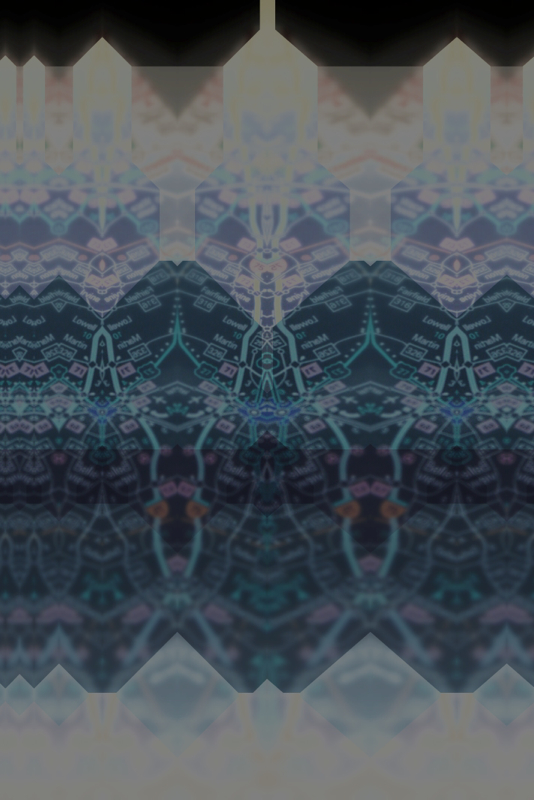
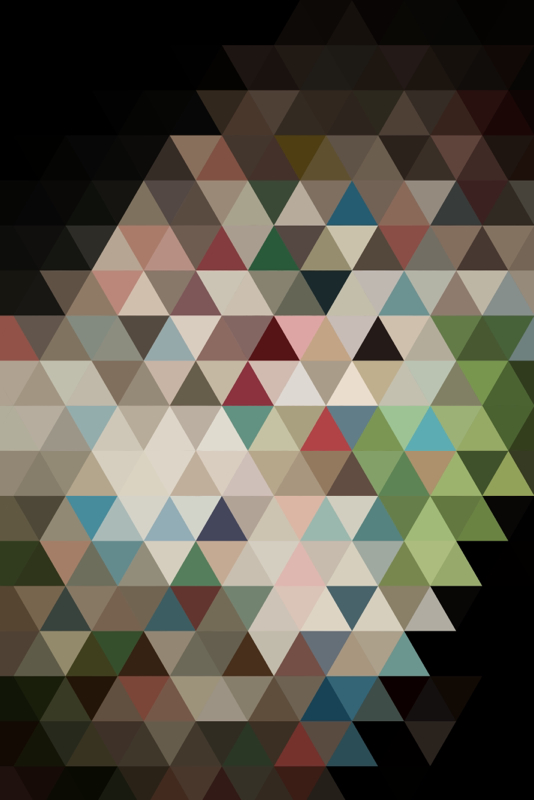
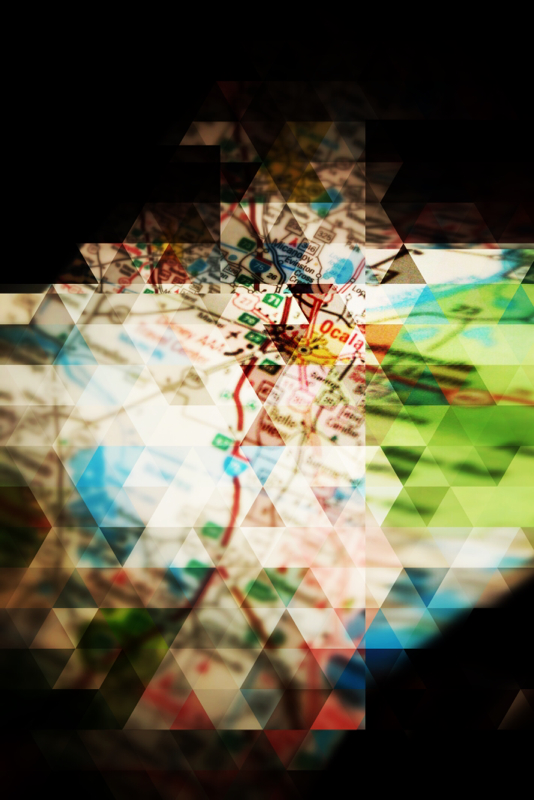
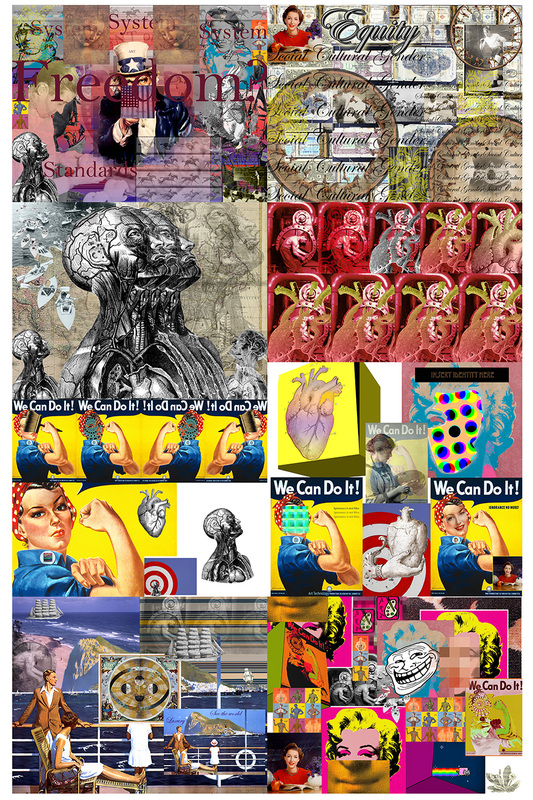
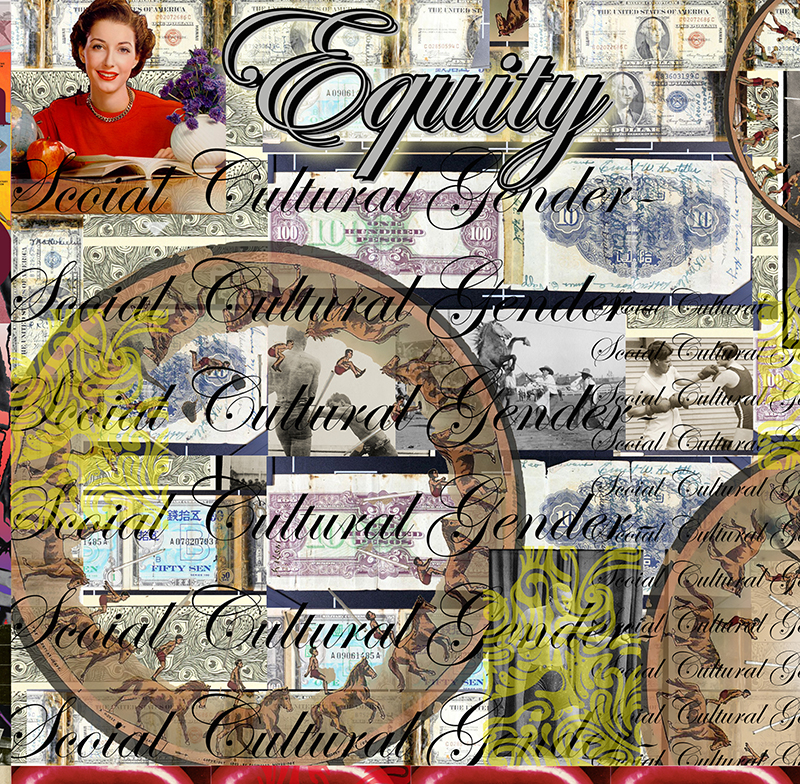

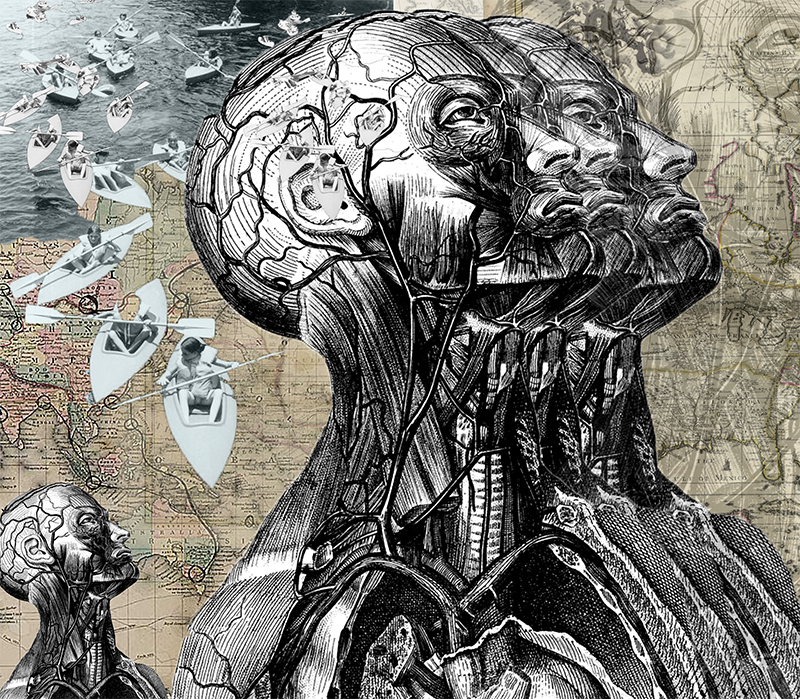
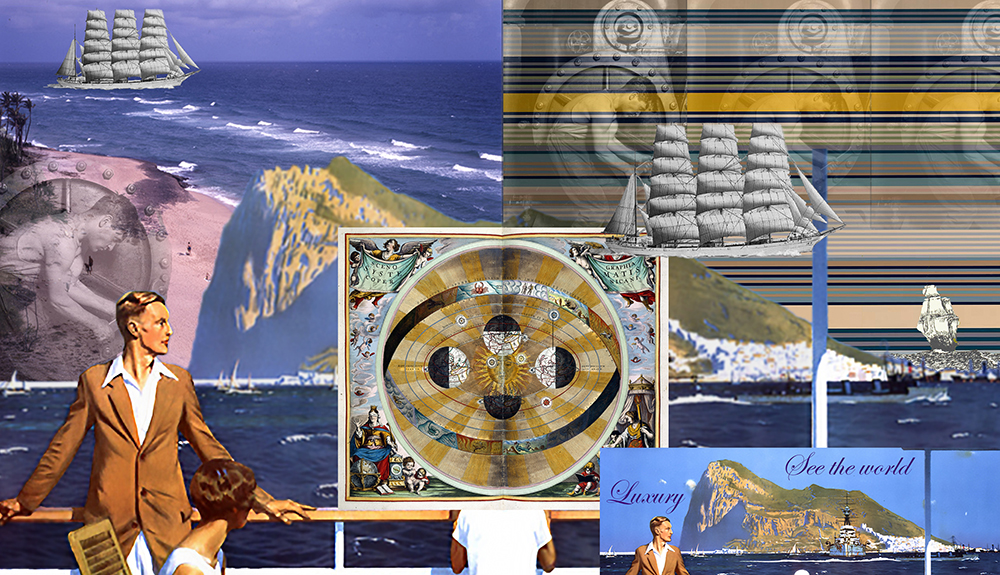
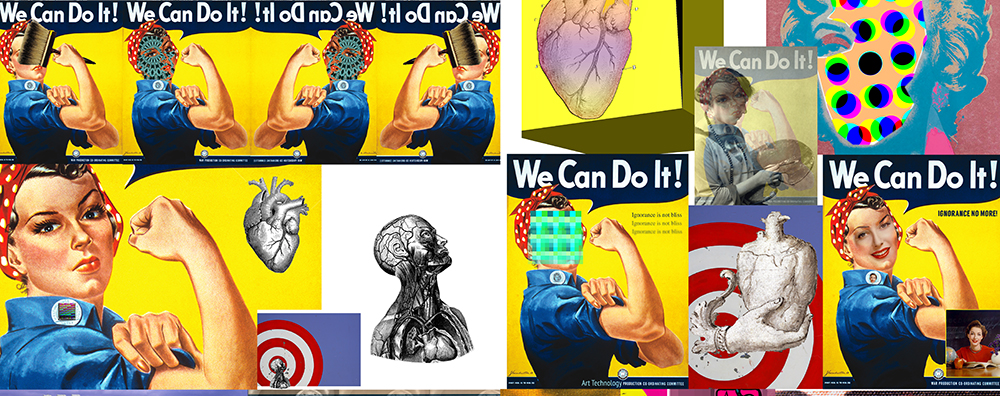
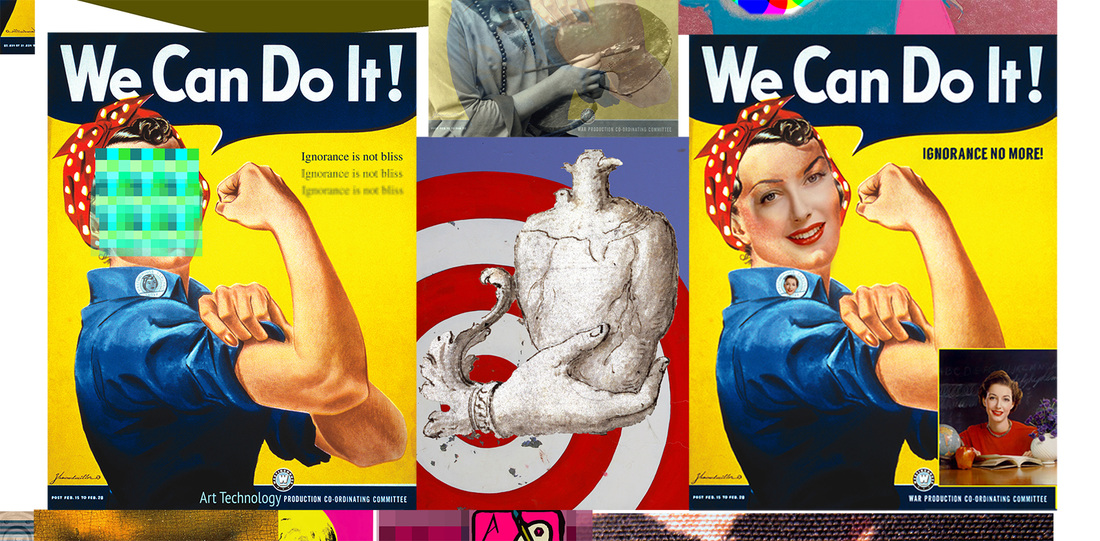
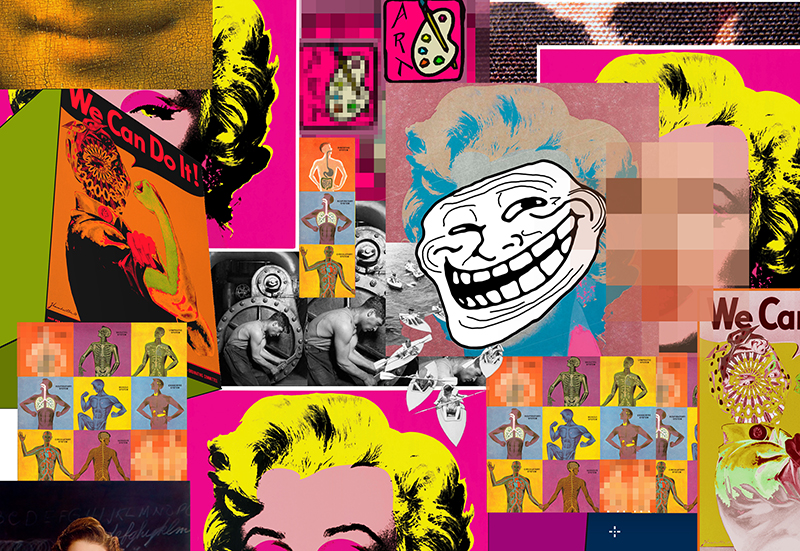
 RSS Feed
RSS Feed